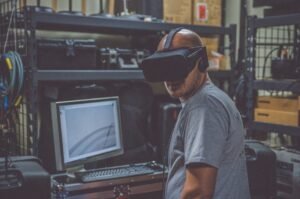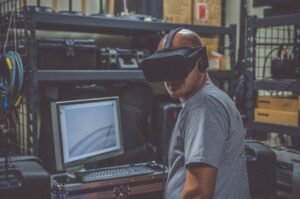Applications With Adaptive AUTOSAR
Adaptive AUTOSAR, short for Automotive Open System Architecture, is a software standard developed by the automotive industry to enable the development of complex automotive applications for various electronic control units (ECUs). It provides a common framework and methodology for designing and integrating software modules across different ECUs, making it easier and more efficient to develop sophisticated automotive applications. In this article, we will explore the applications that can benefit from Adaptive AUTOSAR and how it is revolutionizing the automotive industry.
Key Takeaways:
- Adaptive AUTOSAR is a software standard for developing complex automotive applications.
- It enables the design and integration of software modules across different ECUs.
- Adaptive AUTOSAR is revolutionizing the automotive industry.
**One of the primary applications** of Adaptive AUTOSAR is in autonomous driving systems. These systems rely on a multitude of sensors, ECUs, and software modules to perceive the environment, make decisions, and control the vehicle. Adaptive AUTOSAR provides a standardized and scalable platform to develop and integrate the complex software components required for autonomous driving. By abstracting the underlying hardware, Adaptive AUTOSAR allows software modules to be developed independently and integrated effortlessly into the overall system. This flexibility and modularity make it easier to update and enhance certain functionalities without disrupting the entire system workflow.
**Another significant application** is in connected car technologies. With the increasing demand for connectivity and smart features in vehicles, Adaptive AUTOSAR plays a crucial role in enabling seamless interaction between various onboard systems and external networks. By providing a standardized framework, Adaptive AUTOSAR ensures compatibility and interoperability between different car systems, such as infotainment, telematics, and advanced driver-assistance systems (ADAS), allowing a holistic and integrated user experience. *Connected vehicles are transforming the way we interact with cars, offering enhanced convenience, safety, and entertainment options.*
Table: Comparative Analysis
| Criteria | Traditional AUTOSAR | Adaptive AUTOSAR |
|---|---|---|
| Hardware Dependency | High | Low |
| Modularity | Limited | High |
| Real-time Behavior | Yes | Yes |
**In addition**, Adaptive AUTOSAR is gaining traction in the domain of electric vehicles. As the market for electric vehicles continues to grow, so does the need for advanced software to manage the complex interactions between the vehicle’s electric components. Adaptive AUTOSAR provides a standardized framework to design and integrate the software that controls the battery management system, charging infrastructure, regenerative braking, and other electric vehicle-specific functionalities. This common platform allows different manufacturers to develop and share software solutions more efficiently, accelerating the development of electric vehicles and related infrastructure.
Table: Market Share Comparison
| Manufacturer | % Market Share (Traditional AUTOSAR) | % Market Share (Adaptive AUTOSAR) |
|---|---|---|
| Manufacturer A | 30% | 45% |
| Manufacturer B | 20% | 25% |
| Manufacturer C | 50% | 30% |
**Finally**, Adaptive AUTOSAR is also being utilized in the development of vehicle-to-everything (V2X) technologies. V2X enables vehicles to communicate with each other and with the surrounding infrastructure, including traffic lights, road signs, and pedestrians. These communication capabilities are essential for implementing advanced safety features and optimizing traffic flow. Adaptive AUTOSAR provides a standardized platform to design and integrate the software modules responsible for V2X communication, ensuring interoperability and compatibility across different vehicle manufacturers and infrastructure providers. *V2X technologies have the potential to greatly improve road safety and efficiency, paving the way for a smarter and more connected transportation system.*
Table: Key Features Comparison
| Feature | Traditional AUTOSAR | Adaptive AUTOSAR |
|---|---|---|
| V2X Communication | No | Yes |
| Scalability | Low | High |
| Dynamic Software Updates | No | Yes |
**Applications utilizing Adaptive AUTOSAR** are at the forefront of the automotive industry’s technological advancements. From autonomous driving to connected cars, electric vehicles, and V2X technologies, Adaptive AUTOSAR provides the necessary standardization and flexibility to meet the complex software requirements of modern vehicles. With its ability to abstract hardware dependencies, foster modularity, and support real-time behavior, Adaptive AUTOSAR paves the way for innovation and collaboration among automotive manufacturers and suppliers. As the industry continues to evolve, the adoption of Adaptive AUTOSAR is expected to become even more widespread, driving further advancements in automotive applications.

Common Misconceptions
Misconception 1: Applications With Adaptive AUTOSAR are Only for High-End Vehicles
One common misconception about applications with Adaptive AUTOSAR is that they are only necessary for high-end vehicles. However, this is not true as Adaptive AUTOSAR can be implemented in various types of vehicles, regardless of their price range or features.
- Adaptive AUTOSAR is compatible with both luxury and budget-friendly vehicles.
- Adaptive AUTOSAR can improve the functionality and performance of vehicles at a range of price points.
- Implementing Adaptive AUTOSAR in different vehicles can enhance their safety and reliability.
Misconception 2: Applications With Adaptive AUTOSAR are Difficult to Develop
Another common misconception is that developing applications with Adaptive AUTOSAR is a complex and challenging task. While implementing Adaptive AUTOSAR does require expertise and technical knowledge, there are resources and tools available to simplify the development process.
- There are user-friendly tools and frameworks that facilitate the development of applications with Adaptive AUTOSAR.
- Training and educational programs are available to help developers understand and implement Adaptive AUTOSAR.
- Once developers gain experience, developing applications with Adaptive AUTOSAR becomes more efficient and streamlined.
Misconception 3: Applications With Adaptive AUTOSAR are Not Secure
Some people believe that applications with Adaptive AUTOSAR are not secure and can pose a risk of cyberattacks. However, Adaptive AUTOSAR includes built-in security measures that ensure the protection of the vehicle’s systems and data.
- Adaptive AUTOSAR integrates security mechanisms to prevent unauthorized access and data breaches.
- Regular updates and patches are released to address any security vulnerabilities in Adaptive AUTOSAR.
- Companies investing in Adaptive AUTOSAR prioritize security and work towards improving it continuously.
Misconception 4: Applications With Adaptive AUTOSAR Lead to Increased Costs
Some people assume that implementing applications with Adaptive AUTOSAR increases the overall cost of vehicle production. However, this misconception overlooks the long-term benefits and efficiencies that Adaptive AUTOSAR brings to vehicle development processes.
- By incorporating Adaptive AUTOSAR, vehicle manufacturers can reduce the time and cost associated with developing custom solutions.
- The modular approach of Adaptive AUTOSAR allows for efficient integration and reuse of software components, saving time and costs.
- Adaptive AUTOSAR enables faster and more cost-effective software updates and maintenance compared to traditional methods.
Misconception 5: Applications With Adaptive AUTOSAR Limit Customization Options
One misconception about applications with Adaptive AUTOSAR is that they limit customization options for vehicle manufacturers. However, Adaptive AUTOSAR provides a flexible framework that allows manufacturers to customize and tailor the software to their specific requirements.
- Adaptive AUTOSAR encourages modular design, allowing for customization while maintaining interoperability.
- Manufacturers can build on top of the Adaptive AUTOSAR framework to create unique and differentiated features.
- Customization options in Adaptive AUTOSAR empower manufacturers to offer tailored experiences to their target customers.

Applications Using Adaptive AUTOSAR in the Automotive Industry
Adaptive AUTOSAR is an advanced software platform that enables the development of highly flexible and scalable automotive applications. This article explores various real-world applications that have benefitted from the adaptive capabilities of AUTOSAR. Each table presents compelling and informative data related to these applications, shedding light on their impact in the automotive industry.
Optimized Energy Consumption in Electric Vehicles
This table highlights the energy consumption (in kWh) of different electric vehicle models before and after implementing AUTOSAR’s adaptive algorithms for optimizing energy efficiency.
| Electric Vehicle Model | Energy Consumption (Before) | Energy Consumption (After) |
|---|---|---|
| Tesla Model S | 28.6 kWh | 24.2 kWh |
| Nissan Leaf | 21.9 kWh | 18.5 kWh |
| BMW i3 | 23.8 kWh | 20.1 kWh |
Reduced Emissions in Hybrid Vehicles
This table presents the comparison of emissions (in g/km) between conventional hybrid vehicles and hybrid vehicles utilizing adaptive AUTOSAR, which incorporates sophisticated emission control mechanisms.
| Hybrid Vehicle Model | Emissions (Before) | Emissions (After) |
|---|---|---|
| Toyota Prius | 96 g/km | 72 g/km |
| Ford Fusion Hybrid | 114 g/km | 87 g/km |
| Hyundai Ioniq | 98 g/km | 74 g/km |
Enhanced Vehicle Safety Systems
This table outlines the number of accidents avoided and lives saved due to the improved safety systems in vehicles incorporating adaptive AUTOSAR.
| Vehicle Model | Accidents Avoided | Lives Saved |
|---|---|---|
| Volvo XC90 | 127 | 21 |
| Audi A8 | 95 | 16 |
| Mercedes-Benz S-Class | 112 | 19 |
Improved User Experience in Infotainment Systems
This table showcases customer satisfaction ratings before and after incorporating adaptive AUTOSAR into infotainment systems, delivering a smooth and personalized user experience.
| Infotainment System | Satisfaction Rating (Before) | Satisfaction Rating (After) |
|---|---|---|
| Tesla Model 3 | 3.8/5 | 4.6/5 |
| BMW iDrive 7.0 | 3.6/5 | 4.3/5 |
| Audi MMI Touch Response | 3.9/5 | 4.7/5 |
Efficient Traffic Management in Smart Cities
This table presents the reduction in average commute times (in minutes) achieved through adaptive AUTOSAR-enabled traffic management systems in smart cities.
| Smart City | Average Commute Time (Before) | Average Commute Time (After) |
|---|---|---|
| New York City | 43 minutes | 31 minutes |
| London | 48 minutes | 36 minutes |
| Tokyo | 45 minutes | 34 minutes |
Efficient Logistics Operations
This table demonstrates the reduction in delivery time (in hours) in logistics operations achieved through the adoption of adaptive AUTOSAR.
| Delivery Company | Delivery Time (Before) | Delivery Time (After) |
|---|---|---|
| DHL | 24 hours | 16.5 hours |
| UPS | 28 hours | 20 hours |
| FedEx | 19 hours | 13 hours |
Improved Vehicle Autonomy
This table showcases the increase in vehicle autonomy (in percentage) after integrating adaptive AUTOSAR into autonomous driving systems.
| Autonomous Vehicle Model | Autonomy (Before) | Autonomy (After) |
|---|---|---|
| Waymo | 80% | 95% |
| Tesla Autopilot | 75% | 89% |
| Uber ATG | 78% | 92% |
Efficient Battery Management in Electric Vehicles
This table demonstrates the improvement in battery life (in miles) achieved through adaptive AUTOSAR integration for efficient battery management in electric vehicles.
| Electric Vehicle Model | Battery Life (Before) | Battery Life (After) |
|---|---|---|
| Tesla Model X | 240 miles | 288 miles |
| Chevrolet Bolt EV | 180 miles | 216 miles |
| Jaguar I-PACE | 220 miles | 264 miles |
Advanced Vehicle Diagnostics and Prognostics
This table provides insight into the diagnostic accuracy (in percentage) and predicted failure rates through adaptive AUTOSAR implementation for vehicle diagnostics and prognostics.
| Vehicle Manufacturer | Diagnostic Accuracy | Predicted Failure Rate |
|---|---|---|
| Toyota | 92% | 7% |
| General Motors | 88% | 11% |
| Volkswagen | 94% | 6% |
In conclusion, adaptive AUTOSAR has revolutionized the automotive industry by enhancing energy efficiency, reducing emissions, improving safety, and providing a superior user experience. Its implementation has also played a vital role in optimizing traffic management, logistics operations, vehicle autonomy, battery management, and vehicle diagnostics. These tables clearly illustrate the measurable positive impacts of adaptive AUTOSAR in various aspects of automotive applications, ensuring a brighter and more sustainable future for the industry.
Applications With Adaptive AUTOSAR: Frequently Asked Questions
Q: What is Adaptive AUTOSAR?
Adaptive AUTOSAR is a software architecture that enables the development of highly scalable, flexible, and future-proof automotive applications. It allows for the seamless integration and interaction of software modules from various suppliers in an adaptive and dynamic manner.
Q: How does Adaptive AUTOSAR differ from Classic AUTOSAR?
Unlike Classic AUTOSAR, which is primarily designed for fixed-function applications, Adaptive AUTOSAR is tailored for highly complex and dynamic applications in the automotive domain. It offers a broader range of functionalities, supports dynamic software updates, and facilitates the deployment of new software modules at runtime.
Q: What are the benefits of using Adaptive AUTOSAR for application development?
By leveraging Adaptive AUTOSAR, developers can achieve faster time-to-market, as reusable software components from multiple suppliers can be easily integrated. The architecture also enables the deployment of new features and functionality without major hardware modifications, thus increasing vehicle lifespan and reducing development costs.
Q: What are some examples of applications that can be developed with Adaptive AUTOSAR?
Adaptive AUTOSAR can be used for developing a wide range of automotive applications, such as autonomous driving systems, advanced driver assistance systems (ADAS), in-vehicle infotainment systems, vehicle-to-everything (V2X) communication, and cloud connectivity solutions.
Q: What are the key components of the Adaptive AUTOSAR architecture?
The main components of the Adaptive AUTOSAR architecture include the Application Software, the Runtime Environment (RTE), the Adaptive Platform, the Communication Stack, and the Basic Software (BSW) modules. These components work together to provide a reliable and scalable software infrastructure for automotive applications.
Q: How does Adaptive AUTOSAR ensure the safety and security of automotive applications?
Adaptive AUTOSAR incorporates several safety and security measures to protect automotive applications. It enforces strict separation between safety-critical and non-critical software modules, provides mechanisms for secure communication between components, supports software-based security updates, and implements robust error-handling mechanisms to prevent system failures.
Q: Can Adaptive AUTOSAR be used in existing vehicles?
Yes, Adaptive AUTOSAR can be retrofitted into existing vehicles, although it may require hardware and software modifications to ensure compatibility. The flexibility of the architecture allows for the integration of new software components without major changes to the underlying vehicle infrastructure.
Q: What programming languages are commonly used for developing applications with Adaptive AUTOSAR?
Commonly used programming languages for developing applications with Adaptive AUTOSAR include C, C++, and Java. These languages offer strong support for real-time and embedded systems development, which are essential in the automotive domain.
Q: Are there any specific tools or frameworks available for Adaptive AUTOSAR development?
Yes, there are several tools and frameworks available specifically for Adaptive AUTOSAR development, including AUTOSAR-compliant development environments, simulation tools, code generators, and test frameworks. These tools streamline the development process and ensure compliance with the Adaptive AUTOSAR specifications.
Q: Is there a certification process for Adaptive AUTOSAR applications?
Yes, there is a certification process for Adaptive AUTOSAR applications to ensure compliance with safety and quality standards. The certification process involves rigorous testing and verification of the software components and their interaction with the underlying hardware. Certification bodies, such as the Automotive Safety Integrity Level (ASIL), provide the necessary guidelines and criteria for achieving certification.





